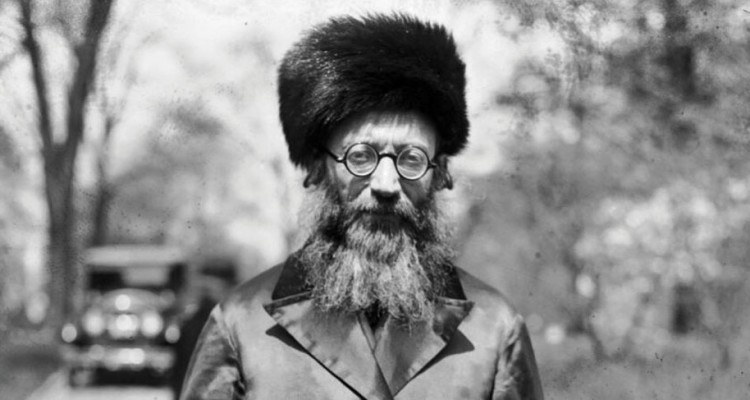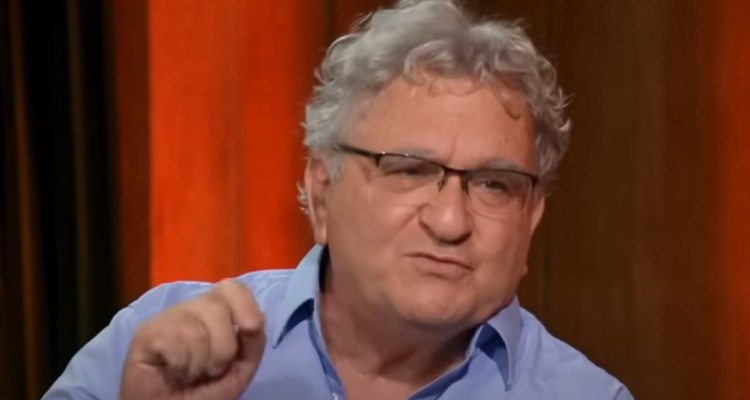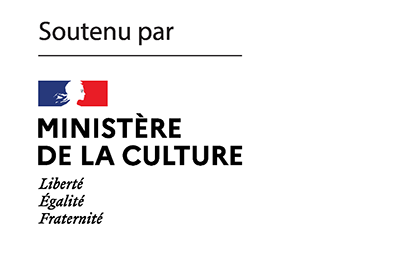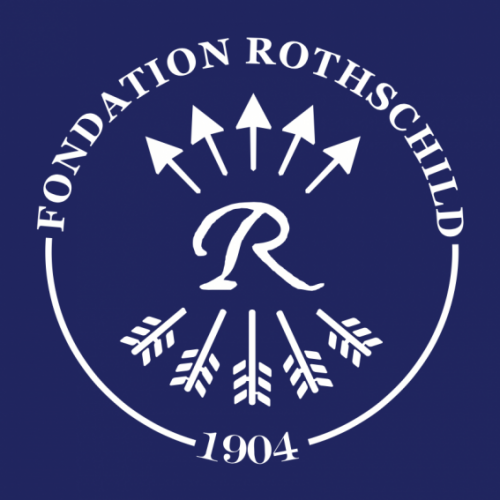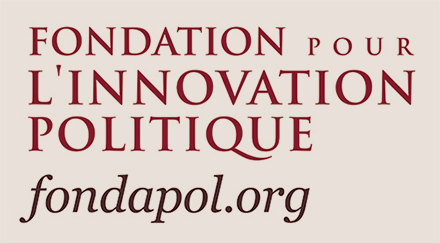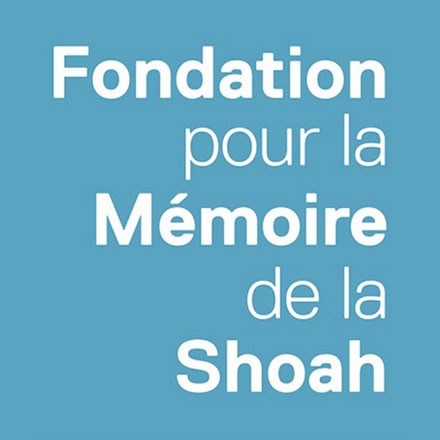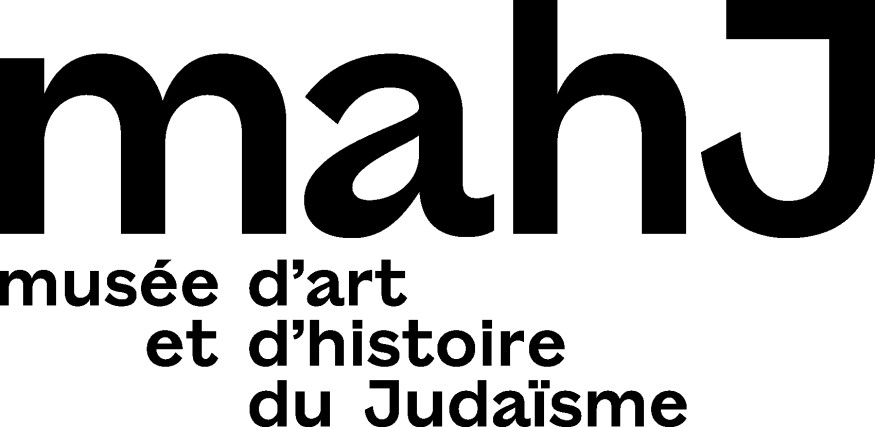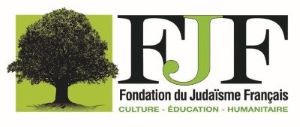Ady Walter’s film Shttl, shot in Yiddish and in Ukraine, will be released in the coming months. It offers an opportunity to reflect on Ukrainian Jewish identity, historically and up to the present day. Akadem brought together the director Ady Walter, the historian Thomas Chopard, a specialist in Ukrainian and Eastern European Jews, and Tal Hever-Chybowski, director of the Maison de la culture yiddish in Paris. K. transcribes here the essential part of their discussion, moderated by Macha Fogel.
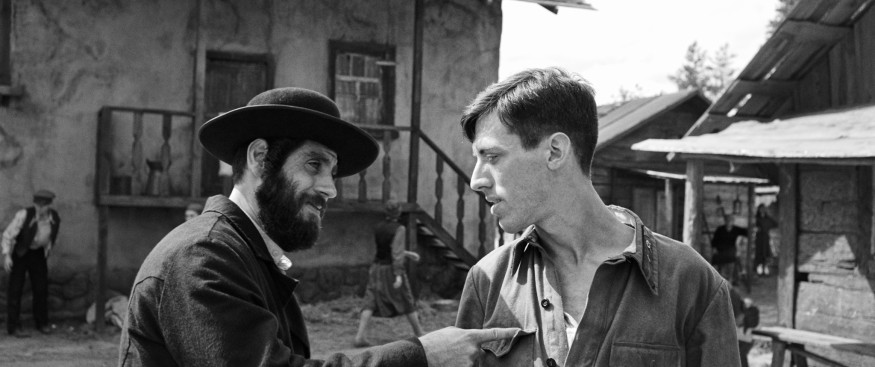
Shttl tells the story of the last day in a pre-war Jewish town before its disappearance. To make this first film, which won the Audience Award at the 2022 Rome Film Festival, the French director and his team built a village of isbas and its wooden synagogue from scratch, an hour outside Kiev before the war, and recruited a team of French, American and Ukrainian actors to shoot entirely in Yiddish. Some of them are Yiddish-speaking: for example, the mother tongue of the actor playing the main role, the American Moshe Lobel, or of the translator of the script, Lili Rosen, both of whom were born into Hasidic families. Others, especially among the Ukrainian actors, did not speak it or knew only a few words. All of them took up the challenge of this film of linguistic reconstruction, or even reinvention. Today, the Ukrainian team is partly involved in the war. The reconstructed shtetl is surrounded by mines. Based on the work of Ady Walter, we question the Ukrainian Jewish identity, between yesterday and today.
*
Macha Fogel: Ady Walter, what was your intention? Why did you want to make this film?
Ady Walter: I have a complicated history with films that deal with the Shoah. I’m not going to go into that now, because it would be extremely long and above all very personal, but, starting from this problem I had, I asked myself the following question: how to talk about the Shoah without really showing it? I said to myself that the idea would perhaps be to tell the story of the last twenty-four hours of a village and its inhabitants, on the border separating in 1941 the USSR, more precisely the Soviet Republic of Ukraine, and Polish Galicia, because the people who lived in these border villages had basically, and surprisingly, no idea of what was going to fall on them. So the film begins twenty-four hours before this surprise attack by Nazi Germany, Operation Barbarossa. This small Jewish village in the west of Ukraine is riddled with all sorts of political and historical tensions. Its inhabitants are also preoccupied by the Soviet occupation, which has reshuffled the cards and upset the economy and the lives of the shteltl.
Macha Fogel: Thomas Chopard, can you tell us what happened when Operation Barbarossa was launched?
Thomas Chopard: To sum up very quickly, let’s remember that in 1939 the German-Soviet pact was signed which dismantled Poland. The whole of what is now Ukraine, the western Ukraine, was annexed to the Ukrainian Soviet Socialist Republic. Over two years an accelerated sovietization phenomenon takes place which is really well shown in the film, with a political, social and economic upheaval in all respects. But it is a rather superficial sovietization which already takes place through the first forms of violence. Massive deportations of former local elites took place. Jewish populations, particularly Polish, who had taken refuge in the Soviet Union, were also deported to the Gulag.
Macha Fogel: Can you tell us about these Polish Jewish refugees who left for the East, for the USSR, at the beginning of the Second World War?
Thomas Chopard: At that time, nearly 300,000 Polish Jews from the German-controlled general government zones in Poland fled the advance of the German army for obvious reasons and found themselves in Soviet territory. But although they were refugees, they were still suspicious in the eyes of the Soviet authorities because they refused to take local citizenship. They were therefore deported to the world of the Gulag. This meant that, on the eve of the start of Operation Barbarossa, a total of nearly 150,000 Jews were deported to the Gulag and were paradoxically saved by these Stalinist deportations, which were extremely brutal in spite of everything. But obviously, if I may say so, the violence was unleashed especially after June 22, 1941 and the German invasion. At that moment, and especially in the western Ukraine, we can see that the violence was unleashed immediately. From the end of June 1941, we already witnessed mass massacres and deportations of Jewish populations. And already at the end of the summer, the Shoah was being prepared: what was called the Shoah by bullets, these mass shootings, multiplied throughout Ukrainian territory. It is, in many ways, the laboratory of this genocidal policy.
Macha Fogel: When the Germans entered these territories, what is sometimes called, as you said, the Holocaust by bullets began. How much improvisation went into the implementation of this mass extermination?
Thomas Chopard: “Improvisation”… This is a vast historiographical debate. Let’s say that it was a genocide that was partly improvised by the actors on the spot, who didn’t immediately know how they were going to manage the general imperatives that they were given, and in particular the main imperative that they had at the time: what is known as the order of the commissars, which ordered the total pacification of a population that was immediately considered suspicious. The Jewish population and potential supporters of Soviet power were among them. What explains these very early massacres from the very first days of the invasion is that the German armies, and in particular the SS and its Einsatzgruppen, its mobile battalions, set out to hunt down the populations that they judged to be among the most suspect. These suspicious populations systematically included Jewish men of military age. And in a certain number of cases, at first sporadic, then rapidly generalised, these groups of men also included women, children and the elderly. We are moving from a policy of pacifying a territory in time of war, which is already a policy worthy of a war crime, it must be emphasised, to a very explicit genocidal policy.
Macha Fogel: Where are these massacres committed? Inside villages, like in the film we are talking about today, or on the outskirts?
Thomas Chopard: They are generally committed on the outskirts of towns, villages and also large cities. The most emblematic case is obviously that of the outskirts of Kiev, with the great Babi Yar massacre at the end of September 1941. But in reality, these cases of massacres can be found almost everywhere in Ukraine, located on the outskirts. However, about two hundred pogroms were also perpetrated inside the cities, especially in western Ukraine, in the first days of the invasion. These were not massacres organised by the Einsatzgruppen, the army and local auxiliaries, but massacres in which the local population took part to a very large extent, and in particular Ukrainian nationalist militants from the Organisation of Ukrainian Nationalists (OUN), who took advantage of the invasion to push a notoriously antisemitic political agenda.
Macha Fogel: Ady Walter, let’s jump back in time. The film was shot in Ukraine before the war. How is the Ukrainian team doing today?
Ady Walter: The team is obviously doing moderately well. I am in contact with many of my former colleagues on the set, but I don’t go into too much detail because some of them have joined the territorial defense, a unit that is now assimilated to the Ukrainian army on the spot. In the end, a war requires few combatants, it is above all a lot of logistics. And film jobs are attractive jobs for the army because they also include a lot of management.
Macha Fogel: What happened to the set you had built?
Ady Walter: We shot an hour north of Kiev, on the edge of what is called the Kievan Sea, this sort of giant artificial lake, just outside Kiev. We had rebuilt a village entirely out of wood: about thirty houses that we patiently built for months and a synagogue that was entirely hand-painted and decorated for many weeks. We know that the shtetl we built, or rebuilt, was caught in the crossfire. The fighting is extremely violent and it is impossible to access the set today as the whole area has been mined. The bridges have been partly destroyed. We don’t really know what happened. We suppose that the place was used at one time as a station for a tank unit, perhaps.
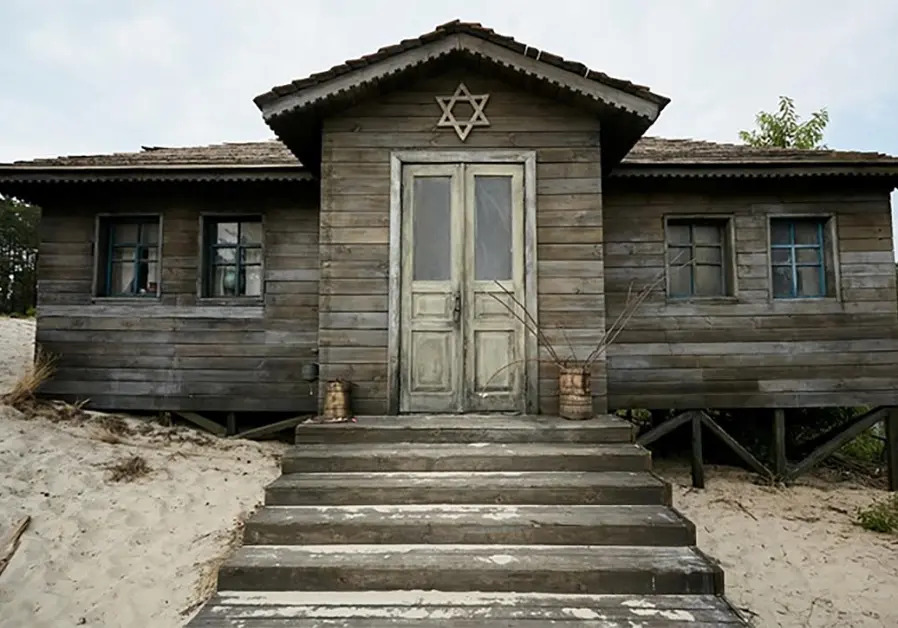
Macha Fogel: I understand that you originally had the idea of turning this film village into a museum…
Ady Walter: Well, it wasn’t really my idea, but the producers’ idea, to perpetuate this rather magical place, situated in the middle of the forest, rebuilt from real isbas, which we had sometimes found in the area and moved. Destroying that didn’t seem very kosher to me, especially the synagogue. That’s why the idea came up to make it an open educational place, with the will to open it to Ukrainians and in particular to young people. We didn’t really want to make it a communal place, i.e. one that would be popular with American tourists visiting Ukraine, for example. Of course, they too would have had access to it, but the idea was rather to make it an educational place, especially for secondary school students.
Macha Fogel: Tal Hever-Chybowski, you have also seen the film…
Ady Walter: Tal even worked on the film. He directed, or directed to be more precise, all the little voices of the shtetl, all the people you hear speaking Yiddish in the background, all those little lines of dialogue in the script, the voice of the shtetl, its music. I wanted even the little voices in the background to be in Yiddish, sometimes in Ukrainian. Tal directed them.
Macha Fogel: And how do you, Tal, who was the conductor of the music of this shtetl, appreciate the reconstruction of Ukrainian Jewish life in the pre-war period in the film?
Tal Hever-Chybowski: I found the approach extremely interesting, the idea of really recreating everything and reconstructing rather than using existing places, traces that perhaps persist here or there. It’s also very interesting from a linguistic point of view. It’s not a 100% reconstruction because you did find some Yiddish-speaking actors, so it’s not a pure linguistic reconstruction. But most of the actors who play are not Yiddish-speaking, most of them don’t even master the language at all.
Ady Walter: Yes, we did a lot of work learning the actors’ Yiddish texts.
Tal Hever-Chybowski: This is a process that has already been done by others, for example, the main actors of Unorthodox, the Netflix mini-series, do not speak Yiddish either.
Macha Fogel: A series that you, Tal, played in, as well as one of the actors in your film, Ady. Even longer ago, a film was made that reminds us of yours, Moi Ivan, toi Abraham, by Yolande Zauberman; it’s also a very beautiful film shot completely in Yiddish.
Ady Walter: Absolutely, that film was an important influence. I saw this film a long time ago, and I mentioned Yolande Zauberman in my closing remarks because it was a film that touched me a lot.
Tal Hever-Chybowski: What I find interesting is the fact that your film involved learning not only Yiddish, but also Ukrainian. And that’s a very clever choice, because it shows that a Jew at the time was never monolingual, but always lived between several languages. In the film, we see the main actor, whose mother tongue is Yiddish in real life, also speak Ukrainian, which he learned for the purposes of the film. That’s what I found really interesting and very moving. It’s a very respectful project of the poli-linguistic life.
Ady Walter: It’s quite a stimulating phenomenon not only of reappropriation, but of reinvention of the language in situ. All of a sudden the shtetl came to life, because you could hear Yiddish all day long in that village. So, even if the cinema doesn’t save anyone, we know very well that we are in fiction, that we are not resurrecting anyone, not from Babi Yar, not from anywhere – and this was a rather heavy psychological burden to bear, there were nevertheless some rather magical days, when we heard Yiddish in the forest, everywhere, in particular during the rehearsals… Day after day, the language settled in the walls, like, as I said, a phenomenon of reinvention, because Yiddish is also very much that. I saw it with the actors and coaches who were working on the language. It is a language that also lends itself to permanent reinvention. So it was interesting to see how it existed not only in the past, but also in the present. In fact, it’s a living language, that’s what I’m trying to say in a rather complicated way. I saw it and lived it and worked with it as a living language, not as the language of the lost. It’s modern Yiddish at times, too.
Macha Fogel: A language spoken by actors from the American Hasidic world, which carries its own innovations. Let’s turn to the relations between Jews and Ukrainians, which we started to talk about in the context of the massacres that took place at the time of the German invasion. The memory of bad relations between Jews and Ukrainians remains to this day. Yet the current Ukrainian president is a classic Soviet Jew. How do you explain this apparent paradox?
Ady Walter: That is a very good question. There are many answers. We should avoid being simplistic. There is a writer who describes these relationships in an extremely accurate way, and that is Aharon Appelfeld, who has written a whole series of books showing how complex the relationships are. They are difficult to summarise. I didn’t want to fall into the trap of concluding that Ukrainians are bad. From my point of view, the extremely negative image of these relations corresponds to a specific historical fact, the 1905 pogrom in Odessa. American Jews in particular, who came to the United States in the wake of that pogrom, came, understandably, with a terrible memory of what had happened in what is still Ukraine today. They brought with them this memory, which has also somewhat fossilised the vision, at least on the other side of the Atlantic, of Jewish history in Ukraine. Afterwards, in everyday life, it was not so simple. The academic Rachel Ertel talks about it and it is also the case with the Poles, by the way: relationships are complex, they are made of many things. You see your neighbour every day. You can’t reduce these exchanges to violent and virulent anti-Semitism on the one hand and a panicked fear on the other. These are very rich relationships, with extremely negative things, positive things, friendship stories, love stories. Again, Appelfeld talks about this extremely well. When he talks about his parents talking about Ukrainians, it’s always subtle. And it was important to me to show this in the film. Moreover, it is a universal story that I am telling. There has been a lot of talk about the Shoah, but it is first and foremost the story of a young boy who comes to prevent a chidukh, an arranged marriage, and wants to get back his teenage love while on leave. His best friend is a Ukrainian, who, as Tal has just mentioned, knows how to express himself in Yiddish and understands it perfectly, which was the case of the majority of peasants who traded with the Jews in the shtetl. The shtetl were not, contrary to popular belief, exclusively Jewish villages, but villages with a Jewish majority, which means that many inhabitants were not Jewish.
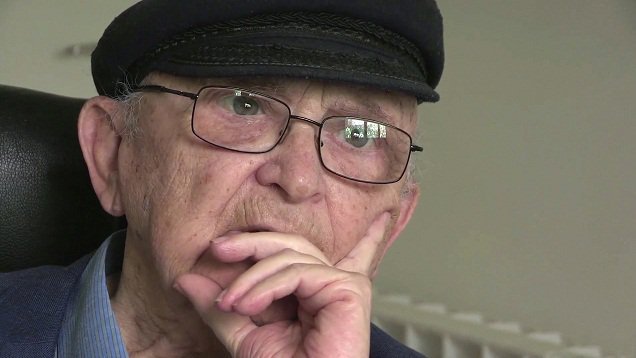
Tal Hever-Chybowski: I would like to add something. You used the word Shoah very often during the conversation, and you just said it. Since we’re talking about a film that honours the Yiddish language, it’s a good opportunity to use the Yiddish name of khurbn, the name that was used by the millions of people who were victims.
Ady Walter: A word that has been forgotten, almost forgotten.
Tal Hever-Chybowski: So this is a good opportunity to remember it. It means destruction. It’s a reference to the destruction of the Temple: of the first Temple, then of the second Temple. The Ashkenazi civilization in Europe is in fact compared to a kind of third Temple. The destruction is that of a civilisation.
Macha Fogel: So it is a question of being part of a cycle of Jewish history.
Tal Hever-Chybowski: Exactly, and I would also like to take this opportunity to mention something… even if I am not here as a historian! When we talk about relations between Jews and Ukrainians, I think we should mention what was the khurbn before the khurbn. In the time that the protagonists of the film know, genocide, in the mind of Jews all over the world, is the pogroms that were perpetrated from 1917 until 1920-21, after the Revolution. It is not by chance, however, that we speak of strained relations between Jews and Ukrainians. These pogroms caused between 100,000 and 300,000 victims, is that right?
Thomas Chopard: 200,000.
Tal Hever-Chybowski: Thank you. And the other antecedent is perhaps the Khmelnitsky pogroms that took place in the XVIIᵉ century, again on the same territory in Ukraine.
Macha Fogel: We absolutely have to go back in time to explain the relationship between the Jews and the Ukrainians, and especially between the Jews and Ukrainian nationalism, which has its sources in the history of the Cossacks and the massacres of Khmelnitsky, who was the father of Ukrainian nationalism and whose memory is hated by the Jews. Could you, Thomas Chopard, remind us what it’s all about?
Thomas Chopard: To go very quickly, indeed, the great Khmelnitsky massacres in the XVIIᵉ century accompanied the great Cossack insurrection against the Polish power. They targeted at the time of this insurrection those who were perceived at the time, often wrongly, as the main supporters of Polish power in these Cossack and Ukrainian lands, i.e. the Jews. There are vast debates about the numbers of these 17thᵉ century massacres. In my opinion, they claimed several tens of thousands of victims to give an order of magnitude. They are indeed the source of a memory that remains extremely vivid until the XXᵉ century. However, for the characters in the film, these characters from the XXᵉ century, it is undoubtedly rather the pogroms of the revolutionary period or of previous periods that are in memory. This appears in a subtle way, somewhat in the background, in the film. Nevertheless, since the end of the 19th century in Ukraine, there has been a form of radicalisation of anti-Semitic violence, with a first wave of pogroms in 1881, which marks the beginning, then in 1903-1905, with, in particular, the Odessa pogrom. At that time, 400 pogroms in Ukraine resulted in around 4,500 victims, i.e. a fairly limited number, but they were spreading throughout the country. Then, the revolutionary period marks a real plateau in the massacres. All armies were guilty of pogroms. The Ukrainian nationalist armies and more generally the Ukrainian peasant insurrections were guilty of at least 400 to 500 pogroms, which were much more deadly. In total, 100,000 Jews were victims of direct massacres, 100,000 women were raped during these pogroms – this is extremely widespread sexual violence – and 100,000 other victims due to epidemics and, let’s say, practices that are quite close to ethnic cleansing.
Macha Fogel: Afterwards, when the Germans invaded the Soviet Union and entered Ukrainian territory, they began by wanting to neutralise the political elements that would be the most unfavourable to them, i.e. the communists, the supporters of the Soviet Republic; among them, the Jews were considered particularly dangerous.
Thomas Chopard: Yes, it’s really this crystallisation of the Judeo-Bolshevik myth that combines political threat and at the same time, in the Nazi way of thinking, a racial group, which, from the outset, radicalises violence to a great extent and opens the way to mass massacres from the very first days.
Ady Walter: I’m rebounding from what happens in the film. It’s quite true, I knew the story of a village called Sokal, which experienced a massacre right away. We are talking about ten people, maybe thirteen people in the lead, who were murdered by the Wehrmacht immediately, that is to say in fact as soon as this 17ᵉ army of the Wehrmacht arrived in the village. Without talking about systematism, such as we will find in the Shoah by bullets, we are immediately in the murderous hatred, I was going to say the most ideological hatred there is.
Macha Fogel: A murderous hatred linked to the fight against communism.
Thomas Chopard: It’s interesting that you mention this case of Sokal, who is almost an exception in the pogroms and violence of the first days of the invasion of 1941. Since, as we mentioned, it is often precisely the Ukrainian nationalists who play a key role, either by instigating the violence or by serving as auxiliaries on the spot. They know the terrain better and they know the language. They are able to identify the potential targets of this antisemitic violence. But in Sokal’s case, it is the army, not the SS or the nationalists, who are at work. And the nationalists are absent. This is indeed the case in Sokal in 1941, and it is an exception.
Ady Walter: Perhaps, quite consciously, I also wanted to talk a little about the Wehrmacht, which is often left out, since we talk a lot about Ukrainian nationalists. I would still like to say that there were millions of Ukrainians in the Red Army. It is very important to remember this because there is a kind of focus on Ukrainian nationalists, which is quite legitimate. I don’t want to do historical revisionism, obviously. And this nationalism was odious and so harmful, especially in urban centres, because the OUN (Ukrainian nationalist armed organisation) was very present in the big Ukrainian cities, it was absolutely monstrous. But we must also pay tribute, or do justice, to those millions of Ukrainian soldiers for whom it was complicated to be in the Red Army with the Nazi army on the other side.
Macha Fogel: Does current Ukrainian nationalism still celebrate the memory of Bandera and these armed movements?
Thomas Chopard: Yes, there are two aspects today. On the one hand, there is a very minority, extreme fringe, which really presents itself as the heirs of Bandera, ultranationalists, ethno-nationalists, xenophobes, often with quite notorious anti-Semitic overtones; they are still a very small minority. But there is, on the other hand, which is more problematic, a recuperation of symbols, that is to say not necessarily an adherence to the ultranationalist political programme, but a recuperation of its symbols. We can think of the red and black flag of the Ukrainian Insurgent Army, or the very figure of Bandera, whose name is now associated with a whole bunch of street signs and statues. The rehabilitation of these Ukrainian nationalists is problematic. From my point of view, it is more a recovery of the symbols of nationalism and of the struggle against the Soviet Union, and therefore of the symbol of independence, rather than a strict recovery of the ultra-radical political programme.
Macha Fogel: But a recovery that serves in some way or is put forward on the Russian side in the motivations of the war in Ukraine?
Ady Walter: Yes, even if making today’s Ukrainians the heirs of the nationalists, the heirs in any case of a Nazi or collaborationist thought, is also to ignore the millions of Ukrainians who served under the uniform of the Red Army. And this is certainly one of the saddest dimensions of the instrumentalisation. It is a kind of disappearance into a black hole of all those Ukrainians who died under the uniform of the Red Army.
Macha Fogel: Among the Ukrainians enlisted in the Red Army, there were also many Jews. Can we go back together now to the question of what a Soviet Jew is? Then we will ask ourselves what happened to Yiddish in the Soviet Union. But first, what is a Soviet Jew? We don’t know very well what it is in France.
Thomas Chopard: A Soviet Jew in the 1980s is very close to what Volodymyr Zelensky is, that is to say, he stopped speaking Yiddish, generally he no longer practices religion, he still has what is called in the Soviet context, Jewish nationality, that is to say, the ethnicity that is present on identity papers and which was last counted in Ukraine at the beginning of the 2000s, so still quite recently. It is a population that has little to do with what it was, including in the film, during the interwar period.
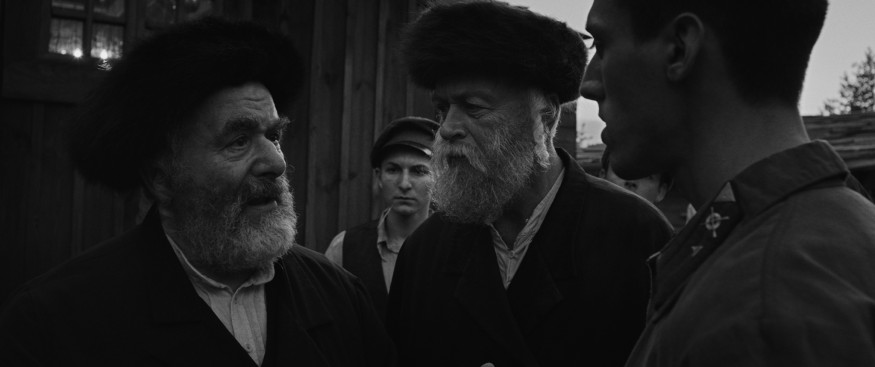
Macha Fogel: There is indeed, in Ukraine as in Russia, and as in the Soviet Union, a difference between citizenship, which is Russian or Ukrainian, and nationality, which can be Tatar, Jewish, Gypsy, etc.
Ady Walter: Exactly. Tal, it would be interesting to have your point of view on Soviet Judaism. The main character of the story I’m telling is a young officer in the Red Army; he works in Kiev for the army cinema and returns to his village on leave. He is a Jew between two worlds, between the modern world and the world of his fathers, the world of the heder, of the yechiva, of study and tradition, and more tradition than study, since not everyone can be a great student. This in a context where economic means are extremely low. It would be interesting to talk about that too, about the class violence that existed in the religious world.
Macha Fogel: Violence is omnipresent in the film, at very different levels – among the Hasidic fathers, the Soviet officials and then the Germans.
Ady Walter: Yes, and so this character is caught between the world of the fathers and the world to come, that is to say the Soviet Union. Because we must also remember, and I show this openly in the film, that the Soviet Union was able to embody a form of liberation. Not so much because of adherence to its ideological principles, but because the new era finally allowed people to leave the village and discover the city. This is also the case for this Ukrainian peasant, Damian, the son of a Ukrainian peasant to be precise, the other main character in my film, who is also caught between two worlds and whom we see finally leaving the agricultural world, which has been turned upside down by collectivisation, in order to move towards a more desirable future, that of the cities: the world promised by the Soviet Union. These are people who are at the same time between two languages and between two worlds… There is also a young woman who is extremely present in this film, who is the third main character, Yuna. She too sees an opportunity to free herself in the Soviet Union, to emancipate herself from the sometimes extremely violent weight of men. This too had to be shown: the Soviet Union offered an emancipating model for young women.
Tal Hever-Chybowski: In fact, this element of the film touches on a cultural and literary topos that is very old in Jewish literature and culture. You have just defined the tension of Jewish modernity, between towns and cities, tradition and novelty, study and non-Jewish science. Assimilation, the question of language, the position of the individual in relation to the parents’ home and to non-Jewish society… The main character is both attracted to the big city, and to a new art, cinema. But at the same time, he is irresistibly drawn back to the village. In fact, this is already quite old. You don’t have to wait until 1942 to have this kind of tension, you can already find it at the end of the XIXᵉ century.
Ady Walter: Yes, it’s already in the stories of Sholem Aleichem for example.
Tal Hever-Chybowski: It is present in Yiddish and classical Hebrew literature and one can even go further back. I’m thinking, for example, of the figure of Solomon Maimon, who built his work on the model of Rousseau’s Confessions. That’s exactly what it’s about: this attraction to the big city, Berlin, as opposed to the small town and the traditional family. And this dates from the end of the 18th century. From the 1920s onwards, we arrived at a new moment in Jewish history, when the young Soviet state and also the young Ukrainian republic, born in 1917, offered Yiddish culture something unprecedented, state money to build a modern culture, with schools, publishing houses…
Macha Fogel: And schools that were detached from religion but were nationally Jewish and governed in a Jewish language.
Tal Hever-Chybowski: Exactly, there is a huge promise of a Jewish modernity, not only on the margins of society, but supported by the state. A promise that will eventually be betrayed.
Ady Walter: The question of what a Soviet Jew is is a good question because there were different agendas. At the time of the Sovietization of Ukraine, the main character adheres in a certain way to this model, I was going to say urban, of modernity. But other political agendas coexist at the same time. There are, for example, Jews with Soviet passports who are Zionists and who will very quickly find themselves deported to the most distant gulags, particularly in Siberia. There are also among those Jews who took refuge in Poland at the beginning of the war, whom you mentioned earlier, Zionists who will also find themselves deported; they don’t have the same political agenda at all and don’t adhere to the Soviet proposal. This will be the case of someone like Menachem Begin, for example, who will be deported by the Soviet political commissars I don’t know where to Siberia, which will paradoxically save his life, while the rest of his family will be killed.
Macha Fogel: You didn’t even have to be as committed as Begin to be deported.
Ady Walter: No, but Zionists at the time can be quite militant. They were often very organised and had a practice of clandestinity.
Macha Fogel: There are also all kinds of Zionists.
Ady Walter: So for the Soviets, a Zionist… I don’t know if they make the difference between Hachomer Hatzair or the Dror and Jabotinsky’s militants… You’d have to ask our historian.
Thomas Chopard: They still distinguish between right-wing Zionists and Zionist activists who may be heirs to socialist currents. In the 1930s this was less true; but at least during the revolutionary years and the 1920s Zionists were, for certain fractions of them, supporters of the socialists.
Ady Walter: But from the 1930s onwards, it seems to me that things change.
Thomas Chopard: Things changed radically at the end of the 1940s with the creation of the State of Israel. From that moment on, Zionism, whatever its colour and even sometimes with an extremely broad definition of the notion of Zionism, became a political target for the Soviet power.
Ady Walter: And this is a trend that had already begun in the 1930s, it seems to me.
Thomas Chopard: Let’s say that yes, Zionists, who could be described as right-wing, were already targeted by the political police at the time of the operations at the end of the 1930s.
Macha Fogel: In any case, a Soviet Jewish culture existed as such. You were talking about a state-sponsored Yiddish culture, Tal. Can you tell us about this Soviet Yiddish culture as long as it existed?
Tal Hever-Chybowski: When you talk about the Soviet Jewish subject at that time, in 1942, you immediately think of Shloim Mikhoels. He was the representative of the avant-garde of Soviet Jewish theatre. A great actor and director of the Jewish State Theatre in Moscow, he was sent on a tour to both the Americas and England with the Jewish Anti-Fascist Committee just after the Nazi invasion; his mission was to motivate the West to join the struggle, and he achieved considerable success.
Macha Fogel: “Jewish Anti-Fascist Committee” then fully supported by the Soviet Union.
Tal Hever-Chybowski: Exactly. And what is important is that this man was not a politician, not an intellectual. He was an avant-garde actor, an artist of the most modern theatre imaginable. You think of him when you see the main character in the film, who is interested in cinema. Mikhoels was also very interested in Soviet cinema. He is, for example, the main actor in the 1925 Yiddish film Glikn by Alexander Granovsky – a great film of Soviet Yiddish cinema. And there you can really see the definition of Soviet Jewish culture at that time: it’s simply modernism.
Ady Walter: I would like to say, to put things into perspective, that before talking about Soviet Jewish culture, there is also an extremely important Ukrainian Jewish culture. Because Ukraine is really the basin, I was going to say of experimentation, of Yiddish theatre, of literature too, before the Soviet era. In the book Royaume juifs, which was published in the Bouquins collection, we see people like Lamed Shapiro… All these people are great Yiddish writers. All these people are great Yiddish writers, and we are lucky enough to be able to read them in French. These writers have enriched me enormously, even if some of them have gone to the United States, like Sholem Aleichem for example. A large part of this cultural activity takes place in Ukraine.
Macha Fogel: In the area of residence in general.
Ady Walter: Yes, what we call the Pale of settlement.
Macha Fogel: In short, Jews were not systematically allowed to live beyond this zone of settlement, they were largely confined to the West of the Russian Empire.
Ady Walter: You don’t hear much about Kiev as an immensely Jewish city; yet it was a very Jewish city, it was huge. Maybe you can say something about it, I’d be interested. We talk a lot about Warsaw, we talk about Krakow, we talk about Berlin. But Kiev is also a Jewish city. But it’s true that it’s a city full of minorities, where tensions and enrichments both exist.
Macha Fogel: So, why would we forget this Jewish Kiev?
Thomas Chopard: Yes, in Kiev, at this point in the XXᵉ century, at least a quarter of the population is of Jewish nationality – of Soviet citizenship, but of Jewish nationality. Moreover, it was a place of extremely lively experimentation with kultur-lige, especially during the revolutionary years. There are also proletarian institutes of Jewish language, Jewish art, in a whole range of areas of cultural life, which are set up and supported by the state and run by Jewish activists, usually Yiddishisers. I think that if this has been forgotten today, it’s because this memory is a victim of the more general rejection of Soviet cultural life.
Ady Walter: And the Shoah…
Thomas Chopard: And the Shoah, of course, with the disappearance of the population that carried this culture. But you mention this Jewish cultural life in Warsaw: today it is very well known. Kiev’s is less well known. I think that this is essentially due to the rejection of Soviet culture. So that despite everything, to return to this question of culture, I think that after the Second World War, it has a tendency to withdraw into the family sphere. This is also perhaps why it is less visible than elsewhere. Sometimes Yiddish is still spoken in the towns, in the cities, in kitchens or in small family circles, despite the destruction, the catastrophe. But despite everything, there are no longer any schools in Yiddish and there is strong political repression. There was much less literature in Yiddish. The Yiddish-language press was reduced to a minimum, so we saw a retreat into areas that were more or less unnoticed, which we are rediscovering today through testimonies, newspapers, memoirs…
Macha Fogel: In fact, we are witnessing the end of the promises of national emancipation in a general way in the Soviet Union.
Thomas Chopard: Yes, indeed, these were betrayed promises, as was said earlier. These promises of emancipation do not succeed. The promises of national life did not succeed either. The second phase of Stalinism is, particularly in Ukraine, a phase of Russification, of glaciation in a way, in an extremely tight and repressive society, in which there is no longer much room for the multilingualism of the inter-war period, for this political plurality, it is obvious. And so this world has disappeared, even if not everyone has been exterminated.
Interview by Macha Fogel
With 
Ady Walter is a scriptwriter and director, and a graduate of the Ecole Doctorale de l’I.E.P. in Paris. His first documentary, co-produced by INA & TV5, “Shalom Amigos”, won an IFTA Award at the British Film Institute for Best Use of Archives. In 2014, he co-wrote “Mr X”, produced by Arte and in official competition at Sundance and Rotterdam. From 2018 to 2021, Ady will write and direct several documentaries for France Télévisions and Canal+. His first feature-length fiction film, “SHTTL”, will be released in cinemas in autumn 2023.
Thomas Chopard is a historian. He holds a doctorate from EHESS, where in 2015 he defended a thesis on anti-Semitic violence and pogroms in Ukraine during the 1917 revolution and the civil war, and is a Postdoctoral Fellow in Jewish Studies at the Institute of Historical Research (IHR) at the University of London.
Tal Hever-Chybowski is director of the Maison de la culture yiddish – Bibliothèque Medem in Paris, where he teaches Yiddish literature. He is editor-in-chief of ‘Mikan Ve’eylakh’: Journal for Diasporic Hebrew (Berlin and Paris). In 2017, he founded ‘Yiddish in Berlin: Summer University for Yiddish Language and Literature’, at the Institute for Eastern Europe of the Free University of Berlin. He recently directed the Yiddish play ‘Jacob Jacobson’ at the Théâtre de l’Opprimé in Paris. He is currently preparing a doctorate in history at the University of Göttingen.
